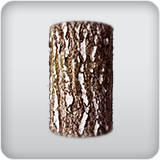Valentine's Day Terrarium Workshop
Register Now

Starlight Chinese Dogwood
Cornus kousa 'Starlight'
Height: 30 feet
Spread: 25 feet
Sunlight:


Hardiness Zone: 5b
Other Names: Kousa Dogwood
Description:
A vigorous and more upright but broadly spreading, densely branched dogwood; has beautiful large white bracts that last for several weeks; covered in raspberry-like fruit in fall; very good disease resistance
Ornamental Features
Starlight Chinese Dogwood features showy clusters of white flowers with white bracts held atop the branches in late spring. It features an abundance of magnificent crimson berries from early to mid fall. It has green deciduous foliage. The pointy leaves turn an outstanding brick red in the fall. The peeling gray bark adds an interesting dimension to the landscape.
Landscape Attributes
Starlight Chinese Dogwood is a multi-stemmed deciduous tree with a stunning habit of growth which features almost oriental horizontally-tiered branches. Its average texture blends into the landscape, but can be balanced by one or two finer or coarser trees or shrubs for an effective composition.
This is a relatively low maintenance tree, and should only be pruned after flowering to avoid removing any of the current season's flowers. It is a good choice for attracting birds to your yard. It has no significant negative characteristics.
Starlight Chinese Dogwood is recommended for the following landscape applications;
- Accent
- Shade
Planting & Growing
Starlight Chinese Dogwood will grow to be about 30 feet tall at maturity, with a spread of 25 feet. It has a low canopy with a typical clearance of 1 foot from the ground, and is suitable for planting under power lines. It grows at a medium rate, and under ideal conditions can be expected to live for 40 years or more.
This tree does best in full sun to partial shade. It does best in average to evenly moist conditions, but will not tolerate standing water. It may require supplemental watering during periods of drought or extended heat. It is very fussy about its soil conditions and must have rich, acidic soils to ensure success, and is subject to chlorosis (yellowing) of the foliage in alkaline soils. It is somewhat tolerant of urban pollution, and will benefit from being planted in a relatively sheltered location. Consider applying a thick mulch around the root zone in winter to protect it in exposed locations or colder microclimates. This is a selected variety of a species not originally from North America.



 Characteristics
Characteristics

 Applications
Applications






 Features & Attributes
Features & Attributes